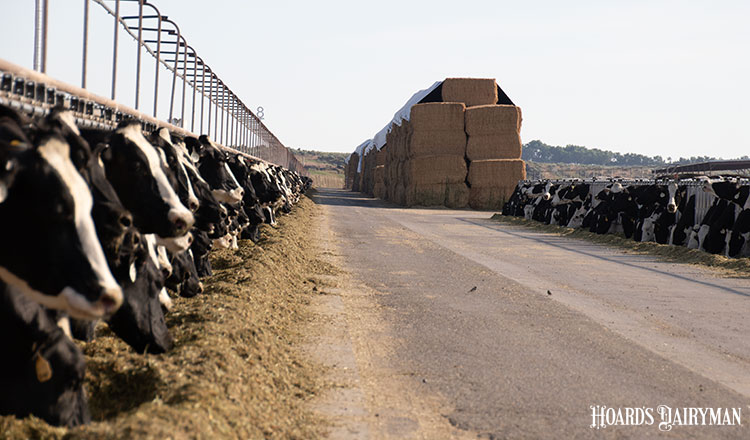
Great forages are the foundation for precision feed management, said Joe Lawrence during a Cornell Cooperative Extension webinar.
That’s because the quality of a farm’s homegrown forages drives the composition of the ration. When a dairy is starting with a high-quality base, they can utilize a high-forage diet that contributes to greater cow health and income over feed cost (IOFC), continued the dairy forage systems specialist with Cornell Pro-Dairy.
Maximizing IOFC is a key part of feeding cows precisely. A farm can supplement some ingredients when forage quality is lacking, but those are often more expensive, and Lawrence noted that grain can never quite make up for the nutritional gap of poor forage quality.
So, how does a farm build a strong forage foundation? Harvest them at the proper stage and store them well, Lawrence emphasized.
“When it comes to harvesting, especially our hay crops in a multi-cut systems, we need to be nimble,” he said. He cited a large study done by Penn State Extension a few years ago that found the number one indicator of profitability among the surveyed dairy farms was the ability to manage forage quality and inventory. Harvesting crops at optimal maturity plays a big role in that.
Lawrence advised farms to target high-quality feed from every acre. Don’t go into a cropping season with a mindset of which fields are going to produce poorly or be harvested at a low quality. Instead, let the uncontrollable challenges you will face along the way — things like weather and equipment problems — determine what feed will become destined for nonlactating animals.
For some specifics, Lawrence reminded that harvest maturity is one of the most significant influences on corn silage quality. Monitor whole plant dry matter and kernel maturity closely. During harvest, think about length of cut, cutting height, and kernel processing score to make high-quality feed.
Maturity is also a critical consideration for hay crops, particularly at first cutting, as it will impact fiber digestibility. Also keep an eye on crop hygiene when harvesting, Lawrence added.
Preserve your effort
Both harvest and storage must be excellent to feed a ration a cow can utilize well. A perfect harvest will waste away if stored improperly.
Start with piles sized appropriately for how much you will remove daily, Lawrence said. He advised having separate storage locations for different feeds or different quality levels so the right ingredients can be used. Consider storage density and make sure a pile is covered well to exclude oxygen. A research-backed inoculant may be a good choice.
“Feedout is always a critical time because we’re reintroducing oxygen to a fermented, stable feed,” he continued. If there were compromises when feed was ensiled, it’s more likely to have challenges at feedout. It’s hard to optimize feeds that are moldy or otherwise deteriorating in the ration.
Take samples at ensiling so you know what you’re starting with, Lawrence recommended. That gives you time to formulate a plan to use the feed. Then, continue sampling when you start feeding it.
Finally, Lawrence noted that there are many different interpretations of forage quality. It is made up of both nutritional quality factors, like what is reported in a lab analysis, and feed value factors that are seen on farm. What forage quality comes down to is having the right quality for the right animals, he said. That’s precise feeding.








